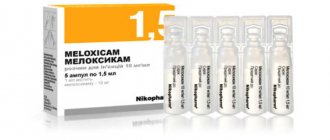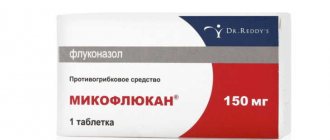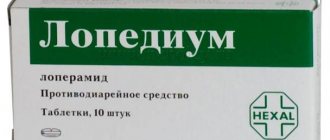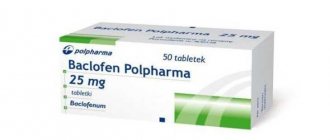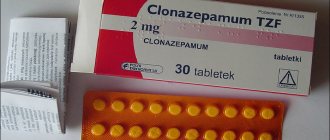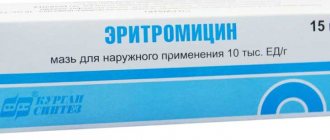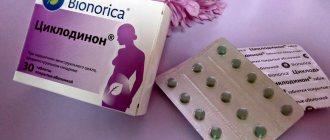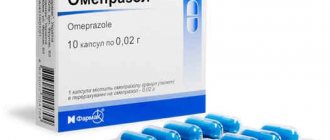Perhaps the most popular group of drugs, leading in terms of total sales worldwide, are drugs from the NSAID group - non-steroidal anti-inflammatory drugs. They were named so because steroid drugs (glucocorticosteroid hormones) are the absolute standard for the strength of the anti-inflammatory effect. Hormonal medications such as dexamethasone or prednisolone have such a strong anti-inflammatory effect that they can cause immune suppression if taken for a long time.
Drugs from the NSAID group do not have this drawback. It is estimated that every day in the world more than 35 million people take drugs from the NSAID group. These medications can have the following effects (to varying degrees):
- analgesic (analgesic) effect;
- anti-inflammatory effect;
- antipyretic effect.
Considering that a very large number of diseases - from arthritis to headaches, from flu to postoperative pain syndrome - occur with signs of pain, fever and inflammation, the popularity of these drugs becomes understandable.
Meloxicam is one of the most effective and safe drugs from the NSAID group. Taking meloxicam is effective and safe. Of course, uncontrolled use of any drug can lead to side effects and complications. Therefore, any medicine from the NSAID group (even aspirin) should be used with a doctor’s prescription, despite the fact that almost all of them are sold without a prescription.
Many patients are interested in what is better: Meloxicam or Movalis? There are also many questions about why it is safer than diclofenac, what are the indications for its use and the names of analogues. Let's answer these and other questions. But first of all, let’s talk about how this medicine works.
Composition and release form
The drug contains the active substance meloxicam, which is a derivative of enolic acid and belongs to the category of oxicams. Depending on the form of release of the drug, its composition also differs slightly.
Meloxicam is produced and sold in the following forms:
- pills;
- rectal suppositories (suppositories);
- sterile liquid in ampoules for injections.
Colloidal silicon dioxide (Aerosil 380), gelatinized starch 1500, as well as magnesium stearate, sodium citrate dihydrate and MCC can be used as additional substances.
The most popular tablet form is Meloxicam . Each pale yellow tablet is round in shape with a dividing notch on one side. They are packaged in special blisters of 10 pcs. The cardboard box contains instructions for use and 2 blisters. Sometimes there is packaging in plastic jars of 20 pieces. The content of the drug in each tablet depends on the variety - 7.5 or 15 mg.
An injection solution of a transparent yellow-green color is available in 1.5 ml ampoules. The special packaging contains 3 or 5 units. The fluid is injected intramuscularly.
Rectal suppositories contain 15 mg of meloxicam and are packaged in 6 or 12 white or yellowish suppositories in one package.
The drug is released in the following countries:
- Russia;
- USA;
- Greece;
- China;
- Israel;
- India;
- Vietnam.
To purchase the medicine, you will need a prescription from your attending physician: without it, the medicine will not be dispensed at points of sale.
“Meloxicam is an effective and safe selective NSAID”
Perhaps the most popular group of drugs, leading in terms of total sales worldwide, are drugs from the NSAID group - non-steroidal anti-inflammatory drugs.
They were named so because steroid drugs (glucocorticosteroid hormones) are the absolute standard for the strength of the anti-inflammatory effect.
Hormonal medications such as dexamethasone or prednisolone have such a strong anti-inflammatory effect that they can cause immune suppression if taken for a long time.
Drugs from the NSAID group do not have this drawback. It is estimated that every day in the world more than 35 million people take drugs from the NSAID group. These medications can have the following effects (to varying degrees):
- analgesic (analgesic) effect;
- anti-inflammatory effect;
- antipyretic effect.
Considering that a very large number of diseases - from arthritis to headaches, from flu to postoperative pain syndrome - occur with signs of pain, fever and inflammation, the popularity of these drugs becomes understandable.
Meloxicam is one of the most effective and safe drugs from the NSAID group. Taking meloxicam is effective and safe.
Of course, uncontrolled use of any drug can lead to side effects and complications.
Therefore, any medicine from the NSAID group (even aspirin) should be used with a doctor’s prescription, despite the fact that almost all of them are sold without a prescription.
Many patients are interested in what is better: Meloxicam or Movalis? There are also many questions about why it is safer than diclofenac, what are the indications for its use and the names of analogues. Let's answer these and other questions. But first of all, let’s talk about how this medicine works.
Mechanism of action of meloxicam
Meloxicam injections and tablets
Without exception, all inflammatory reactions are realized through special substances - prostaglandins, which are formed from arachidonic acid. And for them to form, the enzyme cyclooxygenase is needed. It is this that is suppressed by various classes of NSAIDs, including meloxicam - as a result, the severity of inflammation decreases.
But it turned out that cyclooxygenase comes in two types. And only the second type leads to the induction of prostaglandins and the appearance of inflammation. The first type ensures the integrity of the gastrointestinal mucosa. If it is violated, erosions occur and ulcerative lesions of the stomach and duodenum develop.
First-generation NSAIDs “hit indiscriminately.” They inhibited both the first and second types of cyclooxygenase (COX-1 and COX-2).
Drugs such as diclofenac and ibuprofen have the highest activity (stronger than meloxicam), but they can cause heartburn and stomach ulcers with long-term use (even for a week).
Because these drugs did not make a choice between the type of enzymes, they were called non-selective.
Meloxicam is a representative of selective NSAIDs from the oxicam group, which is capable of selectively influencing COX-2 and stopping inflammation. True, it also affects COX-1, but only slightly. But this is quite enough so that when using meloxicam there are significantly fewer side effects (nausea, vomiting, heartburn) than when using diclofenac and indomethacin.
The drug has an anti-inflammatory effect to a greater extent, and an analgesic effect to a lesser extent. It reduces the temperature very slightly, so it is not worth using it as an antipyretic.
Note: when talking about a slight analgesic effect, we mean pain not associated with inflammation, for example, neuralgia. Meloxicam will help little here. But, if the pain is due to inflammation, for example, radiculitis, then taking meloxicam is quite appropriate.
Why does meloxicam help? Based on the above, it is logical to use this drug in the presence of inflammatory pain. So, the main indications are:
- Rheumatic diseases: rheumatoid arthritis, ankylosing spondylitis (ankylosing spondylitis), psoriatic arthritis.
Note: it is important that meloxicam, like absolutely all NSAIDs, does not in any way affect the course of systemic rheumatic disease - outcome, development of complications, and so on. Its task is to relieve or alleviate the symptoms of pain and inflammation, and the disease develops further, according to its own laws.
- Osteoarthritis and osteoarthritis, glenohumeral periarthritis;
- Radicular syndromes of osteochondrosis (sciatica, lumbago, radiculitis and plexitis);
- Myositis, tendonitis, tendovaginitis;
- Domestic and sports injuries to muscles, joints, sprains.
There are other indications that are determined by the attending physician.
Instructions for use of Meloxicam, dosage
How to take the drug?
Usually the first, original drug “sets the tone” in dosage and frequency of use, since enormous amounts of money have been invested in its development and the necessary clinical trials have been carried out.
For meloxicam (and meloxicam is not the name of the drug, but the INN, or international nonproprietary name), the first drug was Movalis.
This was the first original meloxicam, and everyone else is following it.
Instructions for use of meloxicam include taking tablets and parenteral administration of the drug. The dosages are as follows:
- meloxicam 15 mg tablets; (10 tablets per package);
- meloxicam 7.5 mg tablets (10 and 20 tablets per package);
- meloxicam 15 mg solution for intramuscular administration (3 ampoules, 5 ampoules, and even(!) 50 ampoules);
- suspension for internal use (7.5 mg in 5 ml suspension), 100 ml bottle.
Such an expanded “base” of dosage forms shows the demand for the drug in the pharmacy market. But, like every medal, the advantages of the drug also have a “downside” - these are contraindications and side effects.
Treatment is usually started with a dosage of 7.5 mg. In this case, you cannot take more than two meloxicam tablets, or 15 mg, per day. Accordingly, if a dose of 15 mg is prescribed, then only one tablet can be taken per day, or one intramuscular injection (one ampoule) can be administered.
In case of severe pain, meloxicam is administered intramuscularly (injections) for three days, and then switched to tablet forms. In any case, taking it for more than 10 days without a break is not recommended.
Side effect
When taking meloxicam, there may be a change in the blood - a decrease in the number of formed elements. There may be allergic reactions, headache, dizziness. The drug can cause gastrointestinal bleeding, drug-induced hepatitis, and severe skin lesions (Lyell's syndrome).
When prescribing meloxicam, you should be aware that it is not recommended to prescribe other NSAIDs, SSRI antidepressants, or diuretics together.
More detailed information on interaction can be found in the official instructions.
Pharmacological properties
Meloxicam has pronounced analgesic properties, prevents the onset of inflammatory processes and relieves pain. Due to rapid dissolution in digestive acids and enzymes in the stomach, it penetrates the blood and binds to its proteins within 15 minutes after taking the tablet orally.
Rectal suppositories also act quickly. Injection administration can significantly shorten the period until a noticeable effect appears, since the drug penetrates even faster through muscle tissue into the circulatory system and begins its effect.
The drug slows down the process of synthesizing prostaglandins at the site of inflammation without damaging the mucous surface of the walls of the gastrointestinal tract. Such therapy does not threaten the patient with the appearance of ulcers. Meloxicam inhibits the enzymatic activity of cyclooxygenase, the selectivity of which is significantly reduced with prolonged use of the maximum permissible doses of the drug.
5-6 hours after a single dose of the drug, its concentration in the body is maximum, then it decreases and the drug is gradually eliminated, but does not cease to act.
During metabolism, Meloxicam enters the liver and is destroyed almost completely - 96%. Decomposition products are easily eliminated through the urinary system in literally two days, so there is no accumulation of either the substance itself or its constituent components in the body, regardless of the dosage regimen and dosage regimen.
Indications
The list of diseases that Meloxicam helps with is extensive. More often than other drugs, it is prescribed for various painful pathologies of the joints.
The use of this medicine is very effective in relieving pain and swelling in the following diseases:
- rheumatism;
- rheumatoid arthritis;
- osteoarthritis and osteochondrosis;
- Ankylosing spondylitis - ankylosing spondylitis;
- various bruises and sprains of articular ligaments;
- chronic polyarthritis.
It is also indicated for any other inflammation of the joints and periarticular tissues, accompanied by severe pain and degenerative processes. Due to its antipyretic effect, Meloxicam is successfully used for acute respiratory infections, fevers of various etiologies and local fevers. The analgesic properties of the active substance are actively used in the fight against pain of any origin, including toothache.
Indications for the use of tablets are similar to those for the solution in ampoules. Suppositories can be prescribed for local relief of pain near the anus caused by inflammatory processes occurring there.
Can I take meloxicam for headaches?
Perhaps the most popular group of drugs, leading in terms of total sales worldwide, are drugs from the NSAID group - non-steroidal anti-inflammatory drugs.
They were named so because steroid drugs (glucocorticosteroid hormones) are the absolute standard for the strength of the anti-inflammatory effect.
Hormonal medications such as dexamethasone or prednisolone have such a strong anti-inflammatory effect that they can cause immune suppression if taken for a long time.
Drugs from the NSAID group do not have this drawback. It is estimated that every day in the world more than 35 million people take drugs from the NSAID group. These medications can have the following effects (to varying degrees):
- analgesic (analgesic) effect;
- anti-inflammatory effect;
- antipyretic effect.
Considering that a very large number of diseases - from arthritis to headaches, from flu to postoperative pain syndrome - occur with signs of pain, fever and inflammation, the popularity of these drugs becomes understandable.
Meloxicam is one of the most effective and safe drugs from the NSAID group. Taking meloxicam is effective and safe.
Of course, uncontrolled use of any drug can lead to side effects and complications.
Therefore, any medicine from the NSAID group (even aspirin) should be used with a doctor’s prescription, despite the fact that almost all of them are sold without a prescription.
Many patients are interested in what is better: Meloxicam or Movalis? There are also many questions about why it is safer than diclofenac, what are the indications for its use and the names of analogues. Let's answer these and other questions. But first of all, let’s talk about how this medicine works.
Meloxicam injections and tablets
Without exception, all inflammatory reactions are realized through special substances - prostaglandins, which are formed from arachidonic acid. And for them to form, the enzyme cyclooxygenase is needed. It is this that is suppressed by various classes of NSAIDs, including meloxicam - as a result, the severity of inflammation decreases.
But it turned out that cyclooxygenase comes in two types. And only the second type leads to the induction of prostaglandins and the appearance of inflammation. The first type ensures the integrity of the gastrointestinal mucosa. If it is violated, erosions occur and ulcerative lesions of the stomach and duodenum develop.
First-generation NSAIDs “hit indiscriminately.” They inhibited both the first and second types of cyclooxygenase (COX-1 and COX-2).
Drugs such as diclofenac and ibuprofen have the highest activity (stronger than meloxicam), but they can cause heartburn and stomach ulcers with long-term use (even for a week).
Because these drugs did not make a choice between the type of enzymes, they were called non-selective.
Meloxicam is a representative of selective NSAIDs from the oxicam group, which is capable of selectively influencing COX-2 and stopping inflammation. True, it also affects COX-1, but only slightly. But this is quite enough so that when using meloxicam there are significantly fewer side effects (nausea, vomiting, heartburn) than when using diclofenac and indomethacin.
The drug has an anti-inflammatory effect to a greater extent, and an analgesic effect to a lesser extent. It reduces the temperature very slightly, so it is not worth using it as an antipyretic.
Why does meloxicam help? Based on the above, it is logical to use this drug in the presence of inflammatory pain. So, the main indications are:
- Rheumatic diseases: rheumatoid arthritis, ankylosing spondylitis (ankylosing spondylitis), psoriatic arthritis.
Note: it is important that meloxicam, like absolutely all NSAIDs, does not in any way affect the course of systemic rheumatic disease - outcome, development of complications, and so on. Its task is to relieve or alleviate the symptoms of pain and inflammation, and the disease develops further, according to its own laws.
- Osteoarthritis and osteoarthritis, glenohumeral periarthritis;
- Radicular syndromes of osteochondrosis (sciatica, lumbago, radiculitis and plexitis);
- Myositis, tendonitis, tendovaginitis;
- Domestic and sports injuries to muscles, joints, sprains.
There are other indications that are determined by the attending physician.
Usually the first, original drug “sets the tone” in dosage and frequency of use, since enormous amounts of money have been invested in its development and the necessary clinical trials have been carried out.
For meloxicam (and meloxicam is not the name of the drug, but the INN, or international nonproprietary name), the first drug was Movalis.
This was the first original meloxicam, and everyone else is following it.
Instructions for use of meloxicam include taking tablets and parenteral administration of the drug. The dosages are as follows:
- meloxicam 15 mg tablets; (10 tablets per package);
- meloxicam 7.5 mg tablets (10 and 20 tablets per package);
- meloxicam 15 mg solution for intramuscular administration (3 ampoules, 5 ampoules, and even(!) 50 ampoules);
- suspension for internal use (7.5 mg in 5 ml suspension), 100 ml bottle.
Source: https://novosibmemorial.ru/mozhno-li-prinimat-meloksikam-pri-golovnoj-boli/
Instructions for use, dosage
The amount of the drug for one-time use and the frequency of its use per day are prescribed by the doctor based on the patient’s diagnosis, his age category and individual characteristics.
General intake regimens look like this:
- Taking the tablet form is recommended with meals, dosage from 7.5 to 15 mg per day. If the patient has kidney disease or pathologies of their development, then the maximum permissible amount for consumption per day should not exceed 7.5 mg.
- Deep intramuscular injections can be prescribed to both adults and children over 15 years of age. The first injections should contain no more than 7.5 mg of active substance per day, then you can increase it to 15 mg, and after 3-4 days of therapy switch to tablets with a similar content of meloxicam.
- Suppositories taken at a dosage of 7.5 mg once a day. As an exception, you can increase the dose to 15 mg, but in no case higher.
For various diseases, the daily dose can be varied depending on the achieved treatment result and the recommendations of the treating specialist.
Side effects
Side effects of the drug include:
- Problems with the digestive system begin or those diseases that existed before the start of treatment worsen;
- There are problems with the heart and cardiovascular system;
- Allergic reactions appear on the skin in the form of redness, blisters, small rashes or itching;
- Problems with vision arise, myopia and a sharp deterioration of vision may occur;
- Problems with the nervous system appear. The person becomes irritable, depression or apathy may appear;
- Problems with the respiratory tract. Shortness of breath appears;
- Problems with the urinary system. Pain when urinating or darkening of the urine may indicate side effects.
Contraindications
Despite the high quality of treatment with Meloxicam, there are many more contraindications to its use than the scope of permissible use. In view of this, before using the drug, a doctor’s prescription and strict adherence to the instructions are required.
Cases where the drug is strictly prohibited for use include the following diseases and conditions:
- acute course of gastrointestinal ulcer;
- the risk of internal bleeding in the gastrointestinal tract;
- individual intolerance to the components of the drug or special sensitivity to this and other anti-inflammatory non-steroidal drugs;
- severe liver failure, as well as currently active liver diseases;
- severe active kidney disease;
- During pregnancy and breastfeeding;
- postoperative phase after coronary artery bypass surgery;
- inflammatory processes in the gastrointestinal tract;
- age up to 15 years;
- hyperkalemia is an excess of the normal level of potassium in the blood, confirmed by an electrocardiogram.
There are also cases when the use of Meloxicam is possible, but the dosage must be calculated very carefully, and when taking it, carefully monitor the patient’s well-being. In such situations, it is necessary to weigh all the pros and cons of using this medication, and if the positive effect greatly covers the degree of risk, then this drug is prescribed.
The category of special attention includes patients with the following diseases:
- cardiac ischemia;
- cerebrovascular disorders;
- chronic heart failure;
- diabetes mellitus of all types;
- peripheral arterial disease;
- severe somatic illnesses;
- the patient has a history of stomach and intestinal ulcers;
- dyslipidemia;
- infectious lesions of the body with the bacterium H. Pulori;
- alcoholism and severe dependence on smoking or other drugs.
In addition, the risk category also includes elderly people, as well as patients taking similar non-steroidal drugs for a long time. You should not prescribe the drug in cases of simultaneous use of antiplatelet agents, anticoagulants, selective serotonin reuptake inhibitors and glucocorticosteroids.
Rectal suppositories, in addition, have specific contraindications associated with the risk of bleeding and inflammatory diseases in the rectum, both at the time of use and in the anamnesis.
Meloxicam for osteochondrosis: can it be taken?
Hello everyone who came for the first time and regular readers!
Every patient who has been diagnosed with osteochondrosis has encountered unpleasant symptoms of this insidious disease. Life is especially complicated by severe pain in the affected area of the back, which can radiate to other parts of the body, hindering the patient’s movements.
There is a wide range of painkillers on pharmacy shelves. Among them, a special place is occupied by the new generation non-steroidal anti-inflammatory drug - Meloxicam for osteochondrosis. It suppresses the production of substances that are responsible for the sensation of pain.
The medicine is potent, has its own indications and warnings for use, so before use it is important to familiarize yourself with its characteristics and treatment features.
Meloxicam: release forms, composition
There are no medications that can completely cure osteochondrosis, but there are those that can relieve excruciating pain and significantly improve the patient’s well-being. Meloxicam is one such drug. The active component in it is the substance Meloxicam.
In pharmacies, the medicine can be purchased in three different release forms:
- tablets - active ingredient in a concentration of 15 mg or 7.5 mg in one pill;
- solutions for injections - the concentration of the main element is 10 mg;
- suppositories - the concentration of the active substance is the same as in tablets.
Pharmacies may offer drugs with different names, but with the same composition as Meloxicam. The fact is that the medicine is produced by different manufacturers under different brands, but the dosage of the active component and additional substances in them are the same.
Meloxicam in the treatment of osteochondrosis: mechanism of action and effectiveness
The active component of the drug directly affects the source of inflammation, eliminates it and prevents the formation of new pathologies. For cervical osteochondrosis, patients are prescribed Meloxicam as an anesthetic.
The patient will feel the pain go away within an hour after using the medication, and after three days the pain symptom will be completely relieved. In the treatment of the cervical spine, it is important to understand whether the drug can be taken in tablets in the case of an acute stage or whether it is better to inject it intramuscularly.
Doctors talk about the effectiveness of the medicine in pill form for minor pain, but in case of exacerbations, which are accompanied by painful sensations in the neck, they recommend intramuscular injections.
Injections are given for 2-3 days, after which the patient continues treatment with tablets. The drug is absorbed into the blood from the gastrointestinal tract a quarter of a day after administration. Most of it is absorbed by the body, the rest is removed naturally.
The most effective remedy in the treatment of pathology of the cervical sector of the spine, since in this case it prevents the deformation of its osteochondral tissues. Positive results from treatment with Meloxicam can also be achieved with lumbar osteochondrosis. The dosage and duration are determined by the attending physician.
Meloxicam injections for osteochondrosis: rules for administering the injection solution
Intramuscular administration of the drug is prescribed when the tablets are ineffective or their effectiveness has decreased.
How many days can you be treated with Meloxicam in the form of solutions and how to inject the medicine is determined by the doctor, but most often the treatment regimen is as follows:
- the solution is injected into the upper part of the buttock closer to the thigh;
- injections are performed deeply;
- Do not mix several drugs in a syringe;
- They give one injection per day, that is, every day they use one ampoule containing 15 mg of the active substance.
Treatment is carried out under the supervision of a doctor, since the patient’s condition should be constantly monitored and, if necessary, the dosage is reduced or the injections are completely canceled.
Meloxicam tablets for osteochondrosis: instructions for use
In most cases, for the treatment of mild forms of osteochondrosis of the thoracic, cervical and lumbar spine, a tablet form of the drug is prescribed.
Whether it is possible to take more than one tablet in 24 hours should only be determined by the attending physician, since treatment is considered safe if you drink one tablet per day.
You need to take the medicine generously, 200-250 ml of water. The tablet is swallowed whole and does not need to be crushed or crushed in the mouth. It is best to take the pills in the morning or drink the medicine at night before going to bed.
Many are interested in the question of whether it is possible to take more than two tablets with a concentration of the active substance of 7.5 mg and take up to three tablets per day if the pain does not go away completely. It is not recommended to increase the dosage to more than 15 mg per day, as side effects may develop due to an overdose.
Meloxicam or Mydocalm: the most effective remedy against osteochondrosis
Meloxicam has quite a few analogues, which are almost similar in composition and have an analgesic effect, but can cause serious side effects. For example, an analogue drug for osteochondrosis, Diclofenac, leads to the development of peptic ulcers.
Mydocalm is a safe and effective analogue of Meloxicam for the treatment of pathology of the cervical sector of the spine.
The medication is aimed at:
- decrease in the degree of excitability of muscle fibers without suppression of nerve impulses;
- anesthesia of affected areas;
- eliminating muscle tension;
- dilation of blood vessels;
- improving blood circulation.
How many tablets to take for osteochondrosis, what dosage to choose and how many days to drink to completely eliminate pain will be determined by the attending physician, taking into account the concentration of the active component in one tablet. In addition to Meloxicam and its analogues, doctors recommend using ointments for external application.
The “Zdorov” cream wax has gained popularity, as it is environmentally friendly and safe even for children’s bodies. The drug is made only from natural ingredients, therefore it has no contraindications for use or side effects.
Contraindications and side effects
Before taking tablets or giving injections with Meloxicam, it is important to study the contraindications to its use.
These include:
- stomach ulcer;
- age up to 15 years;
- periods of pregnancy and lactation;
- gastrointestinal diseases;
- kidney and liver pathologies;
- hypersensitivity to elements in the composition.
If these recommendations are not followed or in case of overdose, the following side effects may occur:
- increased blood pressure;
- dizziness and tinnitus;
- allergic manifestations on the skin;
- tachycardia;
- disorientation.
conclusions
Now you know whether Meloxicam helps with osteochondrosis, what effect can be obtained from its use and what nuances should be taken into account before starting the therapeutic course.
Subscribe to my blog, leave your comments under this article, and also ask questions! Recommend reading this article to all your friends on social networks! Take care of yourself and be healthy! See you again!
Sincerely, Vladimir Litvinenko!
Source: https://vladimir-sport.ru/bolezni-lecheniya-i-profilaktika/osteohondroz/meloksikam-kak-silnodejstvujushhee-lekarstvo.html
Side effects and overdose
When the dose is increased or the body becomes sensitive to the drug, side effects of various types may occur. As a rule, their manifestation is characterized by instability and short duration - after stopping the intake or reducing the dose, everything returns to normal.
The following body reactions to intramuscular injections of Meloxicam may occur:
- from the respiratory system .
- The urinary system may respond with disturbances in the functioning of the kidneys.
- to clearly perceive the world around you may be temporarily lost , and corneal conjunctivitis may also develop.
- The skin reaction most often manifests itself in the appearance of a rash, accompanied by itching and redness, as well as increased sensitivity of the skin to ultraviolet radiation.
- Possible increase in blood pressure and increased heart rate , less often - the appearance of edema.
- often appear , as well as tinnitus, spatial disorientation and drowsiness . Occasionally, confusion may occur.
- From the gastrointestinal tract , inflammatory processes in the oral cavity, stomach pain, diarrhea or constipation, nausea, vomiting, the development of gastritis and peptic ulcers of the stomach and intestines, as well as flatulence are possible.
- The hematopoietic organs may react to Meloxicam with manifestations of thrombocytopenia, anemia or leukopenia.
The tablet form of the drug threatens with the same side effects, although there are still some differences:
- From the digestive tract, the following may occur: gastroduodenal ulcer, foul-smelling belching, increased activity of liver transaminases, hidden internal bleeding, hyperbilirubinemia, hepatitis, colitis, and sometimes gastrointestinal perforation and stomatitis.
- Reactions such as erythema multiforme, Stevens-Johnson syndrome, toxic necrolysis of the epidermis, and bullous rash can sometimes appear on the skin
- On the part of the nervous system, confusion, vertigo and instability of the emotional state are possible, manifested in sudden unpredictable mood swings, often without objective reasons.
- When affecting the respiratory system, the drug can provoke bronchospasm.
- The urinary system may respond to taking tablets by increasing the level of urea in the blood and hypercreatininemia, and sometimes by the manifestation of albuminuria, hematuria and interstitial nephritis. In addition, acute renal failure may develop while taking Meloxicam. Urination will be difficult and painful.
- Taking the medication can also cause allergic reactions , such as anaphylactic shock or angioedema.
- Possible febrile state - increased temperature and associated syndromes.
If any of these symptoms occur due to the use of Meloxicam, you must stop taking the drug. An overdose of a drug causes the same symptoms, only to a more severe degree.
To get rid of unpleasant consequences, it is necessary to rinse the stomach as soon as possible, since the absorption of the drug occurs very quickly, and also take absorbent medications, for example regular activated carbon, which will reduce the concentration of the active substance in the body and reduce the severity of side effects.
Medicines for headaches and migraines
Headache occurs at least once in 80% of people in their lives, approximately half of the world's population constantly suffers from headaches.
There are primary pains (tension headache, migraine, cluster pain, trigeminal neuralgia and hemicrania continua) - not associated with organic lesions, and secondary (traumatic, infectious, vascular, metabolic, etc.) - caused by a pathological process.
Among the secondary pains, harmless cervicogenic (associated with overstrain of the neck and shoulder girdle) and abuse (caused by an overdose of painkillers) pain are distinguished.
Most often, a headache is a pain of tension, due to a lack of oxygen, mental stress and stress; it is harmless and can be easily relieved by taking painkillers.
Migraine is unpleasant, but also not dangerous, but constant pain with focal (impaired motor activity and sensitivity from crown to toe on one side of the body) and meningeal symptoms, blurred vision, fever, vomiting, changes in pulse and pressure, dizziness and fainting can be a symptom tumor, hypertensive crisis, intracranial hematoma, etc.
Headache medications
For tension headaches, common combination and single drugs of non-steroidal anti-inflammatory drugs in combination with antispasmodics and caffeine help well.
It is important to choose a drug that contains all three components (NSAIDs, antispasmodics, caffeine), and one, maximum two NSAID options.
It should be remembered that it is necessary to take painkillers according to the instructions, observing the dose and frequency of administration, otherwise you can get the opposite effect - increased pain, and if the pain is chronic, consult a neurologist to rule out a serious pathology.
- Paracetamol: centrally acting pain reliever, recommended for children from one month old, approved for pregnant women. The maximum daily dose is 4 g, in no more than 4 doses with an interval of 4-6 hours, no more often. Paracetamol can cause liver and kidney failure, changes in the blood, and allergic reactions. It is not recommended to combine it with alcohol. Monopreparations in tablets and suppositories: Panadol, Efferalgan;
- Other NSAIDs (ibuprofen, aspirin, indomethacin, diclofenac, nimesulide, myeloxicam, ketoprofen) as medications for headaches: prolong bleeding time, cause ulcers in the digestive tract, increase blood pressure, are toxic to the kidneys and heart, therefore they are used in minimal doses in the shortest courses , after meal.
It should be noted that analgin (metamizole sodium) is prohibited in Europe and the USA due to its toxic effect on the bone marrow and kidneys.
- Caffeine: a stimulating component, tones blood vessels and activates the anti-pain system of the brain, is not used for hypertension, glaucoma, in people over 65 years of age and with increased excitability. Used in combination with other components;
- Antispasmodics: vascular medications for headaches based on papaverine or drotaverine. Because tension headaches are mixed. Including vascular, combination drugs usually contain an antispasmodic. In case of increased intracranial pressure, antispasmodics worsen the condition.
Single drugs for headaches: Nurofen, Brufen (ibuprofen), aspirin, Butadione (phenylbutazone), Voltaren, Diclofen, Rapten, Diklak (diclofenac), Ketanov, Ketorol (ketorolac), Xefocam (lornoxicam), Movalis, Amelotex (meloxicam), Dexalgin (dexketoprofen), Nalgesin (naproxen).
Combined drugs: Sedalgin Plus (analgin, caffeine, thiamine), Solpadeine Fast (caffeine, paracetamol), Caffetin SK, Novalgin, Saridon (paracetamol, caffeine, propyphenazone), Pentalgin (caffeine, drotaverine, naproxen, pheniramine maleate, paracetamol), Brustan , Ibuklin (ibuprofen, paracetamol).
It should be noted that codeine, a centrally acting opioid analgesic, is currently available by prescription, as are combination drugs containing it (Pentalgin Plus, Solpadeine, Sedalgin Neo, etc.).
Migraine medications
Migraine is a special variant of primary vascular headache, accompanied by an aura and strong autonomic reactions: nausea, photophobia, etc.
- Ergot drugs (ergotamine and dihydroergotamine): constrict the blood vessels of the brain, relieving the attack. Due to low selectivity, they have side effects: low pulse, increased blood pressure, muscle and heart pain, sensitivity disorders. Combinations of ergotamine and caffeine can neutralize side effects and enhance results. Dihydrergot nasal spray (with caffeine), Ditamine, Nomigren (caffeine, propyphenazone, camilofine chloride, ergotamine tartrate, mecloxamine citrate), Redergin (dihydroergotoxin);
- triptans: selective agonists of serotonin 5HT1 receptors (eletriptan, naratriptan, zolmitriptan, sumatriptan), eliminating autonomic symptoms and pain without significant side effects. Use with caution in severe cardiovascular diseases;
- auxiliary agents: antiemetics (metoclopramide, domperidone), nootropics (cinnarizine, nicotinic acid, nicergoline), beta blockers, vitamins.
The most effective are triptans: they help two thirds of patients relieve a migraine attack, while simple and combined analgesics help only one patient out of three. Prescribing these drugs requires consultation with a doctor!
Rules for migraine therapy
- The drug should act within 2 hours, in two attacks out of three, and relieve pain for at least a day;
- It is necessary to give preference to single drugs, in the form of a nasal spray or sublingual tablets;
- You cannot take regular analgesics for more than 15 days a month, triptans and combinations for more than 10 days;
- It is better to take the drug AT THE BEGINNING of the attack; triptans are not taken during the aura;
- If the drug does not work or the pain returns, you can re-take the same drug or another.
Table 1. Drugs indicated for the relief of migraine attacks
Source: https://TopMeds.ru/chem-lechitsya/218-lekarstva-ot-golovnoj-boli-i-migreni
special instructions
There are some important instructions to take into account before using the product. First of all, Meloxicam should never be taken with alcohol: this can cause the development of irreversible processes in the liver, kidneys and gastrointestinal tract.
The use of the drug and similar medications can affect fertility; women must take this into account when planning to conceive. Meloxicam can hide the symptoms of infectious and viral diseases.
Taking the drug may negatively affect the ability to concentrate, so it should be taken with caution by people whose work requires concentration.
Use during pregnancy and breastfeeding
Movalis is contraindicated during pregnancy. Inhibition of prostaglandin synthesis may have undesirable effects on pregnancy and fetal development. Data from epidemiological studies indicate an increased risk of spontaneous abortion and heart defects in the fetus after the use of prostaglandin synthesis inhibitors during pregnancy. The absolute risk of developing heart defects increased from less than 1% to 1.5%. This risk increases with increasing dose and duration of therapy.
In the third trimester of pregnancy, the use of prostaglandin synthesis inhibitors can lead to the following fetal development disorders:
- premature closure of the ductus arteriosus and pulmonary hypertension due to toxic effects on the cardiopulmonary system;
- kidney dysfunction, with further development of renal failure with a decrease in the amount of amniotic fluid.
During labor, the mother may experience an increase in bleeding time and a decrease in uterine contractility, and as a result, an increase in labor time.
NSAIDs are known to pass into breast milk, so Movalis is not recommended for use during breastfeeding.
The use of meloxicam, like other drugs that block cyclooxygenase/prostaglandin synthesis, may affect fertility and is therefore not recommended for women wishing to become pregnant. If the ability to conceive in women is impaired or when undergoing examination for infertility, it is necessary to consider discontinuing meloxicam.
Interaction with other drugs
When using other medications simultaneously, it is necessary to take into account compatibility with Meloxicam. In particular, use together with diuretics, as well as Cyclosporine, can cause renal failure, and the joint use of lithium preparations will cause its accumulation in the body, and consequently, poisoning.
There are other dangerous combinations of drugs with Meloxicam and its analogues:
- The effect of antihypertensive drugs on the body will be significantly reduced when taking this medication.
- The risk of bleeding increases when taking blood thinning medications.
- Myelotoxic drugs can increase the severity of hepatotoxicity of Meloxicam.
- Methotrexate in this combination will cause the development of leukopenia.
- The drug Meloxicam is not recommended to be taken with other drugs of the same group, since the risk of developing peptic ulcers of the entire gastrointestinal tract, from the oral cavity to the rectum, increases significantly. The same applies to taking acetylsalicylic acid.
- When taking medication with diuretics, it is necessary to significantly increase the amount of fluid consumed.
In addition to the already studied risky combinations of medications, there are still unknown ones, so combining the drug with any other types of medications is possible only under the supervision of the attending physician.
Meloxicam - compatibility
Before prescribing this medication, the doctor will find out what medications the patient is taking. Meloxicam can be used with drugs of various groups.
However, it is important to remember about drug interactions:
- When combined with anticoagulants, the likelihood of bleeding increases.
- The simultaneous use of several NSAID medications increases the likelihood of erosions in the digestive tract.
- When Meloxicam is combined with oral contraceptives, the therapeutic effect of the latter is reduced.
- Sometimes this drug is taken together with antihypertensive drugs. In this case, the effect of Meloxicam is noticeably reduced.
- Diuretics taken simultaneously with NSAIDs cause severe damage to the kidneys. After such a tandem, dysfunction of these organs develops rapidly.
- It is unacceptable to combine Meloxicam with alcoholic beverages. This combination will cause serious disruptions in the functioning of the nervous system.
Drug analogues and prices
There are quite a lot of drugs similar in content of the active substance. They differ slightly in composition; the main differences are in price and manufacturer.
The main analogues of Meloxicam are the following:
- Arthrozan - the average cost ranges from 150 to 170 rubles.
- Amelotex - the price of the drug in tablets is from 135 rubles, in ampoules - 400 rubles.
- Bi-xicam - from 140 rub.
- Melbek - cost from 230 rubles.
- Mataren will cost the buyer an average of 285 rubles.
- Meloflam - price from 300 rubles. Contains dimexide as an excipient.
- Meloflex Rompharm - costs from 210 to 325 rubles in various pharmacies.
- Melox - 450 rub.
- Meloxicam Prana, Pfizer, Sandoz, Tev, Avexim, RLS, Xefok - from 170 to 500 rubles.
- Movalis - from 200 rub.
- Movasin - 315 rub.
- Mesipol - 180 rubles.
- Mixol Od - 265 rub.
- Mirlox - the cost does not exceed 200 rubles.
- Movix - the price of the drug is approximately 340 rubles.
- Exen Sanovel - 500 rub.
Thus, the price of Meloxicam and its analogues ranges from 130 to 500 rubles. In addition, when purchasing, you need to pay attention to the dosage - it also greatly affects the cost, as well as the auxiliary components, in order to take into account the body’s reaction to them.
Sometimes Meloxicam is replaced with Nimesulide . This is due to the lack of the necessary medicine in the pharmacy at the moment, a similar effect on the body and a relatively low cost. Which drug is better is up to the patient to decide. The difference between these medications is small, but in case of individual intolerance to Meloxicam, you have to look for a replacement, and Nimesulide is perfect for this role.
Analogues of Meloxicam are also used in veterinary medicine. For example, there is a popular drug Meloxivet in suspension for cats and dogs. Its principle of action is the same - it is an analgesic, antipyretic and anti-inflammatory agent.
